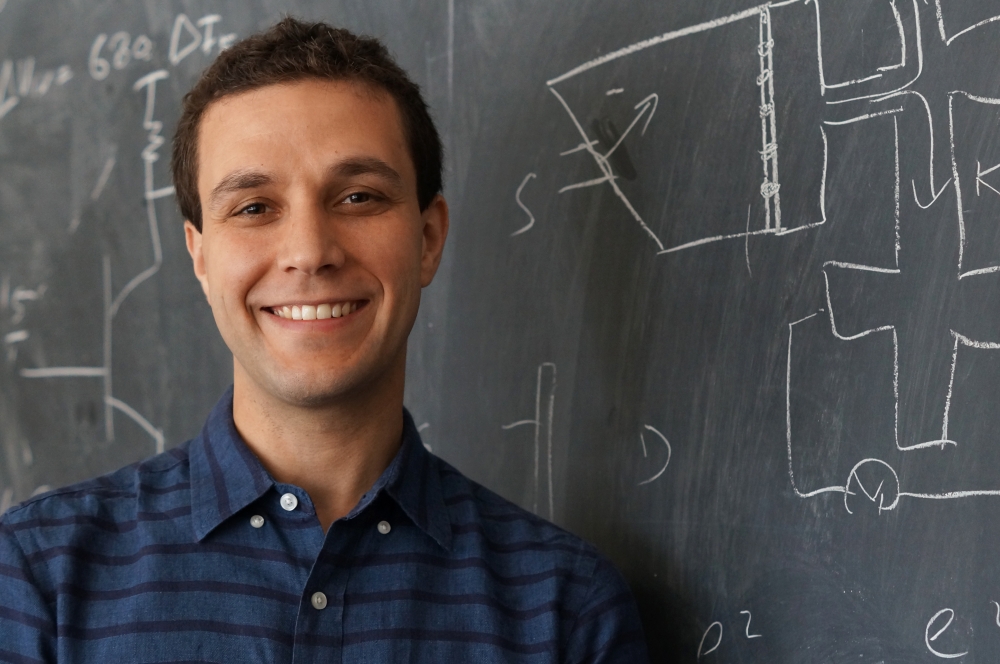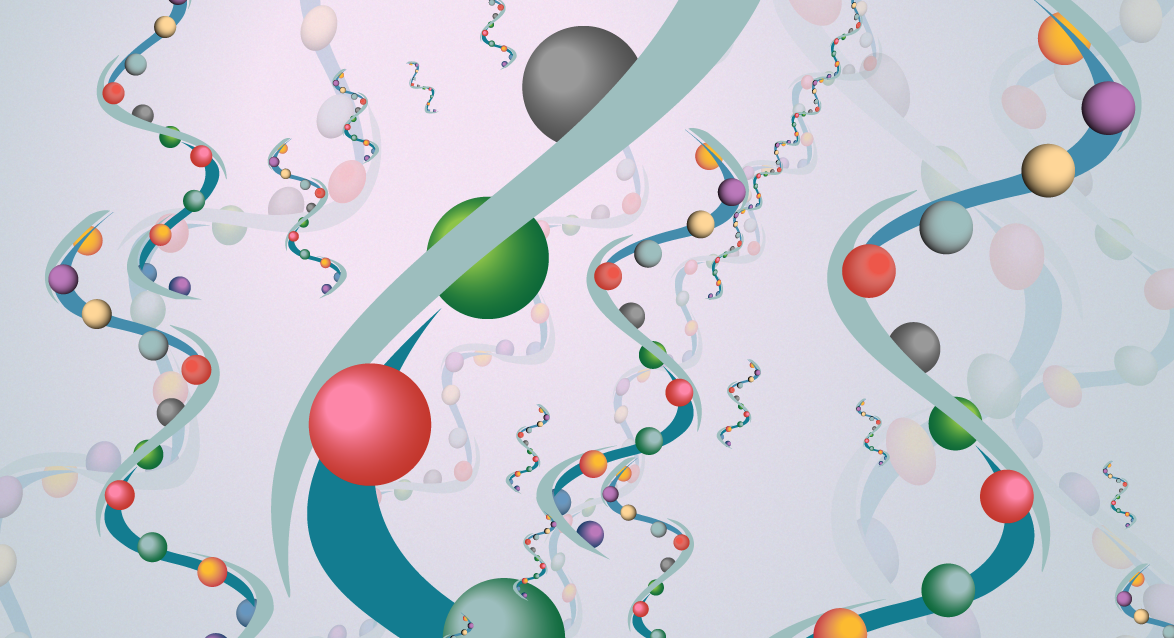
Try, Try Again
And to think the discovery almost didn’t happen.
During his doctoral years at Columbia University, physicist Andrea Young and colleagues tried to perfect the environment around graphene, the single-atom-thick material derived from graphite. It conducts heat and electricity efficiently and is 100 times stronger than the strongest steel, but because it’s so thin, graphene is strongly influenced by its surroundings. A dirty substrate, for example, degrades its electronic and optical properties.
Trying to solve the problem but making little headway, Young and his collaborators nearly gave up.
“After a year of frustration, we were ready to call it quits,” recalled Young, now an assistant professor of physics at UC Santa Barbara. “We had hints that putting graphene on a sheet of hexagonal boron nitride might make cleaner electronic devices, but we couldn’t get rid of these large wrinkles. We finally managed to cut them away, and when we cooled down the first wrinkle-free sample, we immediately saw a subtle effect of electronic correlations that had only been hinted at before.”
In the years since, Young and his collaborators determined how to integrate graphene and other atomically thin crystals into layered two-dimensional arrangements called van der Waals heterostructures.
As a result of that discovery, Young has been awarded the 2016 McMillan Award for outstanding contributions in condensed matter physics. Named in memory of physicist William McMillan of the University of Illinois at Urbana-Champaign, the award is presented annually for distinguished research performed within five years of receiving a Ph.D.
“I congratulate Andrea on this wonderful award,” said Pierre Wiltzius, executive dean of the College of Letters and Science. “Looking through the list of previous winners, I note that he will join the ranks of highly accomplished scientists, including Eric Betzig, who went on to win the Nobel Prize. I am very proud that he is in our physics department and look forward to many future professional accolades.”
Recounting the discovery, Young said the hard part was figuring out how pick up a single sheet of graphene and put it on top of or in between layers of boron nitride. “Think about reusing Saran Wrap — it gets wrinkled and it’s a mess,” he said. “Now imagine that wrap was 30,000 times thinner — we struggled with that for quite a while!
“The key thing was that even though it was difficult to figure this out the first time, it turned out not to be difficult to reproduce,” he added. “We knew right away the discovery would have a big impact, but the community did a lot with the technique we didn’t think about originally.”
The electrons in graphene live in a two-dimensional world with unique laws of physics. Young’s own work has focused on engineering electronic devices whose behavior is dominated by their quantum mechanical properties. By tailoring the environment around a graphene sheet or coupling multiple sheets together, he and his research group are trying to observe new states of matter unique to two dimensions.
“In many ways, graphene was a democratization of low-dimensional physics because anybody can take a piece of Scotch tape and a piece of graphite, and with very simple, very standard tools have a relatively high-quality two-dimensional electron gas to play with,” Young explained. “Van der Waals heterostructures expand that democracy to include much more complicated structures.”



